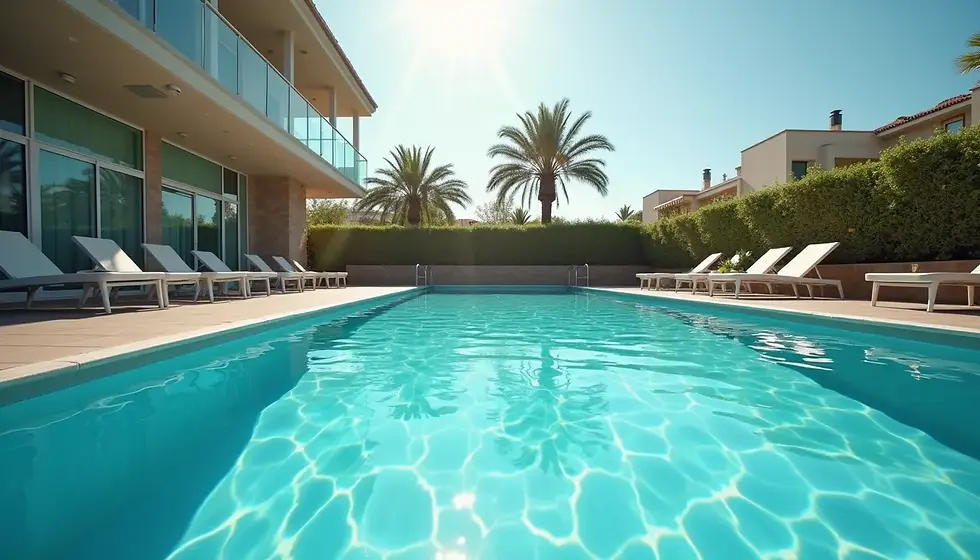How to Lower pH in Pool: A Simple Guide for Homeowners
- Mei-Lin Arora

- Sep 5
- 3 min read
Updated: Sep 7
If your pool water feels cloudy, irritates your skin, or leaves scale on pool walls, chances are the pH is too high. Learning how to lower pH in pool water is essential for safe swimming and protecting your equipment. The good news? With the right tools and chemicals, it’s easier than most homeowners think. 🏊
Why high pH in pool water is a problem
The ideal pH range for pool water is 7.2–7.6. Anything above 7.8 is considered high and can lead to:
Cloudy water
Scale buildup on walls and equipment
Irritated eyes and skin
Reduced chlorine effectiveness
According to the Centers for Disease Control and Prevention (CDC), keeping pool chemistry balanced is crucial for both swimmer health and water clarity.
High pH in pool water makes chlorine less effective, meaning bacteria and algae are more likely to thrive.

How to Lower pH in Pool Water
There are two main products pool owners use: muriatic acid and sodium bisulfate (dry acid).
Step 1: Test your water
Use a reliable pool test kit to check the current pH. This helps determine how much chemical you’ll need.
Step 2: Calculate dosage
For muriatic acid: The general guideline is 1 quart per 10,000 gallons of water to lower pH by about 0.2 points.
For sodium bisulfate: Follow package instructions—typically 1 lb per 10,000 gallons reduces pH by about 0.2–0.3.
If you’re wondering how much muriatic acid to lower pH in pool water specifically, always start small and retest. Overdosing can swing your pH too low.
Step 3: Add the chemical safely
For muriatic acid: Dilute it in a bucket of water (never the other way around), then pour it evenly around the pool’s perimeter.
For sodium bisulfate: Sprinkle directly into the pool or pre-dissolve, depending on the label.
The Pool & Hot Tub Alliance recommends circulating the pump for at least 30 minutes after adding chemicals.
Step 4: Retest and adjust
Wait 4–6 hours, then retest the water. Repeat the process if pH is still above 7.6.
Patience is key—lowering pH gradually is safer for both swimmers and equipment than trying to fix it all at once.

How to Adjust pH in Pool Long-Term
Once you’ve balanced the water, prevent future spikes by:
Checking pH 2–3 times per week during heavy use.
Keeping total alkalinity between 80–120 ppm.
Avoiding overuse of shock treatments, which can raise pH.
Ensuring proper water circulation and filtration.

FAQ
How to lower pH in pool quickly?
Use muriatic acid or sodium bisulfate, add carefully, and circulate the pump for several hours.
What happens if pH stays high?
You’ll see cloudy water, scale, and reduced chlorine effectiveness.
How much muriatic acid to lower pH in pool?
Roughly 1 quart per 10,000 gallons lowers pH by 0.2, but always test and adjust gradually.
Can I swim with high pH in pool water?
It’s not dangerous short-term but can cause eye and skin irritation and reduces chlorine efficiency.
How often should I test pool pH?
At least twice a week in summer, more if the pool gets heavy use.
Final verdict: keeping pool pH balanced
If you’re asking how to lower pH in pool, the answer is simple: test, add the right chemical, and retest until the water is balanced. Whether you choose muriatic acid or dry acid, consistent testing and small adjustments keep your pool clear, comfortable, and safe. 🌊



Comments